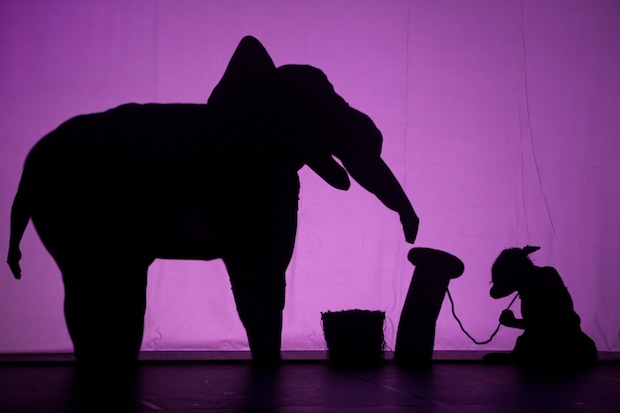It all started in 1971, when a group of physically and artistically talented youngsters decided to create a dance company and call it Pilobolus, after a fungus. Not unlike this barnyard micro-organism, which ‘propels its spores with extraordinary speed and accuracy’, the company was soon propelled to international success. But it was not an easy time to make ‘new dance’ in the US. On the one hand, living monuments such as Martha Graham, Merce Cunningham and Paul Taylor were still in full creative mode and dominated modern dance. On the other hand, the innovators of postmodern dance had given new meanings and directions to the art. Pilobolus took something from both. Theirs was the ‘other dance’, which explored the almost infinite possibilities offered by the human body and at times pushed it to the limits of its abilities. This ‘other dance’ drew upon an innovative combination of circus acrobatics, contortionism, mime, gymnastics and diverse choreographic idioms. Pilobolus’ creations stood out for their visual impact, and for the dramatic tension it produced, even when it was just a matter of sheer fun. It thus reproposed the notion of ‘spectacle’ at a time when the postmodernists had just said ‘no to spectacle’ — as stated in Yvonne Rainer’s famous ‘no’ manifesto.
I am pleased to say that spectacle is still at the core of its creations, and so are many of its original characteristics. Shadowland is a 90-minute narrative piece, in which the ancient art of shadow play is revisited through Pilobolus’ unique aesthetic. It was in 2007 that the company first engaged publicly with playing with shadows, to entertain audiences watching the 79th Academy Awards. One year later, its take on this ancient art was seen by millions, thanks to Sesame Street. The success of both events led to the creation of Shadowland in 2009, a show that has been seen all over the world.
Conceived by a stellar team — which includes Steven Banks, the award-winning writer of SpongeBob SquarePants — the show uses a number of different-sized screens, against which shadow images are created through what is often a breathtaking use of the body, along with some occasional props. The story is a modern fairy tale, which starts with a rebellious girl who goes to sleep and dreams of leaving home. Her adventure has all the seasoned traits of the fairy tale, with villains, magic and long stretches of gothic fear; these are combined with modern-day themes, such as diversity, animal rights, identity, etc. At times, the whole narration slips into sugary naivety, but, luckily, this doesn’t happen very often.
The shadow magic is great, and what makes it even more magical is the fact that the performers are seen ‘in and out’ of the screens, providing further evidence that there is no trick to the images, just bodies assuming the most amazing and awkward positions. There is some dance, too, but that, in my view, could easily be done away with, as it adds little or nothing to the action. The transformation scene, in which the young girl is turned into a dog-faced creature by a Michelangelo-like hand of God from the Sistine Chapel, is just one of many highlights of the evening.
At the end, we are treated to mesmerising picture-postcard visions of New York and London. A Big Ben made of legs, torsos and arms is certainly a sight to behold.






Comments